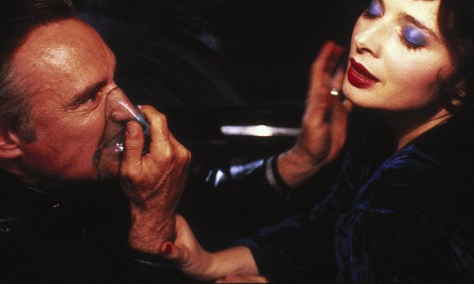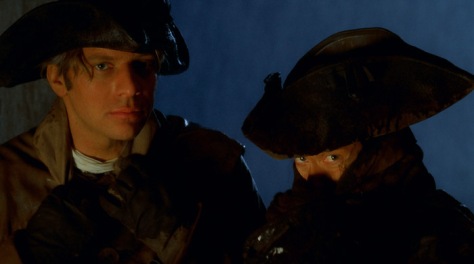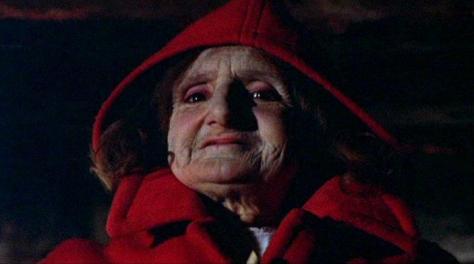By Dennis Hartley

Have you had it up to “here” yet with all the 1968 retrospectives? Yes, I know. Hang in there; we’re halfway through the year, so you should not have to weather too many more.
It can’t be helped…there’s something sexy about “50th” anniversaries And, there was something special about 1968. As Jon Meacham noted in a Time article earlier this year:
The watershed of 1968 was that kind of year: one of surprises and reversals, of blasted hopes and rising fears, of scuttled plans and unexpected new realities. We have embarked on the 50th anniversary of a year that stands with 1776, 1861 and 1941 as points in time when everything in American history changed. As with the Declaration of Independence, the firing on Fort Sumter and the attack on Pearl Harbor, the events of ’68 were intensely dramatic and lastingly consequential. From the assassination of Martin Luther King Jr. in April and of Robert F. Kennedy in June to the violence at the Democratic National Convention in August to the election of Richard Nixon in November, we live even now in the long shadow of the cascading crises of that year.
It was also a year when cinema came face-to-face with “scuttled plans and unexpected new realities.” The eclecticism of 1968’s top 10 grossing films indicates a medium (and an audience) in cultural flux; from cerebral art-house (2001: A Space Odyssey, Rosemary’s Baby), low-budget horror (Night of the Living Dead), and star-powered adult drama (Bullitt, Planet of the Apes), to traditional stage-to-screen adaptations (The Odd Couple, Romeo and Juliet, Funny Girl) and standard family fare (The Love Bug, Oliver!).
Just for perspective, here were the top 10 domestic grossing films of 2017: The Last Jedi, Beauty and the Beast, Wonder Woman, Jumanji: Welcome to the Jungle, Guardians of the Galaxy (Vol. 2), Spiderman: Homecoming, It, Thor: Ragnarok, Despicable Me 3, and Justice League. Is it me-or is there a depressing, mind-numbing homogeneity to that list?
Oh, well…I’ll leave it to whomever is writing a retrospective in 2067 to sort that mess. If you will indulge me one more 1968 retrospective, here are my personal picks for the 10 best films of that year (plus 10 more I heartily recommend, if you want to delve deeper!).

If…. – In this 1968 class struggle allegory, director Lindsay Anderson depicts the British public-school system as a microcosm of England’s sociopolitical upheaval at the time. It was also the star-making debut for a young Malcolm McDowall, who plays Mick Travis, one of the “lower sixth form” students at a boarding school (McDowall would return as the Travis character in Anderson’s two loose “sequels” O Lucky Man! and Britannia Hospital). Travis forms the nucleus of a trio of mates who foment armed insurrection against the abusive upperclassmen and oppressive headmasters (i.e. the “System”).
Some critical reappraisals have drawn parallels with Columbine, but the film really has little to do with that and nearly everything to do with the revolutionary zeitgeist of 1968 (the uprisings in Czechoslovakia, France, Germany, etc.). That said, you can see how Anderson’s film could be read outside of original context as a pre-cursor to Massacre at Central High, Rock ’n’ Roll High School, Heathers, The Chocolate War and Rushmore. David Sherwin and John Howlett co-wrote the screenplay.

Hell in the Pacific – This 1968 offering from the eclectic John Boorman (Point Blank, Deliverance, Excalibur, Hope and Glory) is essentially a chamber drama, set on a small uninhabited Pacific Island in the closing days of WW2. It’s a two-character tale about a pair of stranded soldiers; one Japanese (Toshiro Mifune) and the other American (Lee Marvin).
The first third, a virtually dialog-free cat-and-mouse game between the sworn enemies, is a master class in physical acting by Mifune and Marvin. Eventually, necessity precipitates an uneasy truce, and the film becomes a fascinating study of the human need to connect (the adage “no man is an island” is figuratively and literally in play). The final act suggests an anti-war sentiment. It’s interesting that a film with such minimal dialog needed three screenwriters (Reuben Bercovitch, Alexander Jacobs, and Eric Bercovici).

The Lion in Winter – Anyone who has delved into the history of royal family dynasties in the Middle Ages will attest that if you take away the dragons, witches, zombies and trolls…the rather nasty behavior on display in Game of Thrones isn’t that far removed from reality. After all, as Eleanor of Aquitane (Katherine Hepburn) deadpans in director Anthony Harvey’s historical drama, “What family doesn’t have its ups and downs?”
Adapted for the screen by James Goldman from his own 1966 stage play, the story centers on a tempestuous family Christmas gathering in 1183, at the chateau of King Henry II (Peter O’Toole). All the scheming members of this family want for Christmas is each other’s head on a platter (ho ho ho!). Joining the merry festivities are Anthony Hopkins, Timothy Dalton, John Castle, Nigel Terry, and Jane Merrow. Goldman’s beautifully crafted dialog sings (and stings) and the acting is superb. The film was nominated for 7 Oscars and earned 3 (for Hepburn, Goldman, and composer John Barry).

No Way to Treat a Lady – Directed by Jack Smight (Harper, Kaleidoscope, The Illustrated Man) and adapted from William Goldman’s eponymous novel by John Gay, this terrific black comedy pits a neurotic NYC homicide detective (George Segal) against an evil genius serial killer (Rod Steiger).
While there is nothing inherently “funny” about a killer on the loose who targets middle-age women, there’s a surprising number of laughs; thanks to an overall New Yorker “attitude” and Segal’s harried interactions with his leading ladies-Eileen Heckart (as his doting Jewish mother), and Lee Remick (as his love interest). Steiger is typically over the top, but this is one of his roles where the water finds its own level…he was perfectly cast for this part. Comedy elements aside, the film is genuinely creepy and suspenseful; in some ways a forerunner to Silence of the Lambs.

Once Upon a Time in the West – This is a textbook “movie for movie lovers” …cinema at its purest level, distilled to a perfect crystalline cocktail of mood, atmosphere and narrative. Although it is chockablock with “western” tropes, director Sergio Leone manages to honor, parody, and transcend the genre all at once with this 1968 masterpiece.
At its heart, it’s a simple revenge tale, involving a headstrong widow (Claudia Cardinale) and an enigmatic “harmonica man” (Charles Bronson) who both have a bone to pick with a gun for hire (Henry Fonda, cast against type as one of the most execrable villains in film). But big doings are afoot-like building a railroad and winning the (mythic) American West. Also with Jason Robards, Jack Elam, Woody Strode and Keenan Wynn.
Dario Argento and Bernardo Bertolucci helped develop the story, and it wouldn’t be classic Leone without a rousing soundtrack by his longtime musical collaborator, Ennio Morricone (you won’t be able to get that “Harmonica Man Theme” out of your head).

Petulia – An underappreciated, uncharacteristically “serious” character study/social commentary from director Richard Lester (A Hard Day’s Night, A Funny Thing Happened on the Way to the Forum, The Three Musketeers). On the surface, it’s about a star-crossed affair between a young, flighty newlywed (Julie Christie) and a middle-aged physician with a crumbling marriage (George C. Scott).
In hindsight, one can also enjoy it as a “trapped in amber” wallow in the counter-cultural zeitgeist of the late 60s (filmed in San Francisco at the height of the Summer of Love, no less). Look for cameos from Big Brother and the Holding Company, The Grateful Dead, and comedy troupe The Committee. Beautifully acted and directed. One caveat: Lester’s non-linear approach is challenging (but rewarding). The screenplay was adapted by Lawrence B. Marcus and Barbara Turner from John Haase’s novel. Nicholas Roeg did the lovely cinematography.

Planet of the Apes – The original 1968 version of The Planet of the Apes had a lot going for it. It was based on an acclaimed sci-fi novel by Pierre Boulle (whose semi-autobiographical debut, The Bridge on the River Kwai, had been adapted into a blockbuster film). It was helmed by Franklin J. Schaffner (Patton, Papillon, The Boys from Brazil). It had an intelligent script by Michael Wilson and Rod Serling. And, of course, it had Charlton Heston, at his hammy apex (“God DAMN you ALL to HELL!!”).
Most notably, it opened the same month as Stanley Kubrick’s 2001: A Space Odyssey. Both Kubrick’s and Schaffner’s films not only blew minds but raised the bar on film-goers’ expectations for science-fiction movies; each was groundbreaking in its own way.
*SPOILER AHEAD* The 1968 film also ended with a classic Big Reveal (drenched in Serling’s signature irony) that still delivers chills. “They” could have left it there. Granted, the end also had Charlton Heston riding off into the proverbial sunset with a hot brunette, implying it wasn’t over yet, but lots of films end with the hero riding into the sunset; not all beg for a sequel. But Planet of the Apes turned out to be a surprise box office smash, and once Hollywood studio execs smell the money…I needn’t tell you that “they” are still churning out sequels to this day. But the progenitor remains the best entry.

Rosemary’s Baby – “He has his father’s eyes!” Roman Polanski put the “goth” back in “gothic” in this truly unsettling metropolitan horror classic. A New York actor (John Cassavetes) and his young, socially phobic wife Rosemary (Mia Farrow) move into a somewhat dark and foreboding Manhattan apartment building (the famed Dakota, John Lennon’s final residence), hoping to start a family. A busybody neighbor (Ruth Gordon) quickly gloms onto Rosemary with an unhealthy zest (to her chagrin). Rosemary’s nightmare is only beginning. No axe murders, no gore, and barely a drop of blood…but thanks to Polanski’s impeccable craft, this will scare the bejesus out of you and continue to creep you out after credits roll. Polanski adapted the screenplay from Ira Levin’s novel.

The Swimmer – A riveting performance from Burt Lancaster fuels this 1968 drama from Frank Perry (and a non-credited Sydney Pollack, who took over direction after Perry dropped out of the project). It was adapted for the screen by Eleanor Perry, from a typically dark and satirical John Cheever story. Lancaster’s character is on a Homeric journey; working his way home via a network of backyard swimming pools. Each encounter with friends and neighbors (who apparently have not seen him in some time) fits another piece into the puzzle of a troubled, troubled man. It’s an existential suburban nightmare that can count American Beauty and The Ice Storm among its descendants.

2001: A Space Odyssey – The mathematician/cryptologist I.J. Good (an Alan Turing associate) once famously postulated:
Let an ultra-intelligent machine be defined as a machine that can far surpass all the intellectual activities of any man…however clever. Since the design of machines is one of these intellectual activities, an ultra-intelligent machine could design even better machines; there would then unquestionably be an ‘intelligence explosion’, and the intelligence of man would be left far behind. Thus, the first ultra-intelligent machine is the last invention that man need ever make, provided that the machine is docile enough to tell us how to keep it under control.
Good raised this warning in 1965, about the same time director Stanley Kubrick and sci-fi writer Arthur C. Clarke were formulating the narrative that would evolve into both the novel and film versions of 2001: a Space Odyssey. And it’s no coincidence that the “heavy” in 2001 was an ultra-intelligent machine that wreaks havoc once its human overseers lose “control” …Good was a consultant on the film.
Good was but one of the experts that Kubrick consulted, before and during production of this meticulously constructed masterpiece. Not only did he pick the brains of top futurists and NASA engineers, but enlisted some of the best primatologists, anthropologists, and uh, mimes of his day, to ensure that every detail, from the physicality of pre-historic humans living on the plains of Africa to the design of a moon base, passed with veracity.
Transcendent, mind-blowing, and timeless doesn’t begin to do justice. I don’t personally know too many people who haven’t seen this film…but I know there’s a few of you out there, in the dark (you know who you are). I envy you, because you may have a rare chance to see it on the big screen. Earlier this year, in honor of the 50th anniversary of the film’s first run, Christopher Nolan supervised a 70mm re-release of the “unrestored” version that presents it as audiences originally experienced it in 1968 (fussy collectors needn’t worry, Warner Brothers is readying a sparkling 4K restoration for later this year).
Encore! Here’s 10 more recommendations:
The Battle of Algiers
The Bride Wore Black
Bullitt
Candy
Charly
Head
One Plus One
The Party
Targets
Yellow Submarine



























